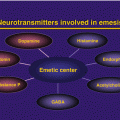Type of agent
Examples
Mode of action
Affected cell cycle phese
DNA-modifying agents
Alkylating agents
Chlorambucil
Alkylation of DNA
Phase nonspecific
Cyclophosphamide
Alkylation of DNA
Phase nonspecific
Carmustine
Alkylation of DNA
Phase nonspecific
Lomustine
Alkylation of DNA
Phase nonspecific
Dacarbazine
Alkylation of DNA
Phase nonspecific
Temozolomide
Alkylation of DNA
Phase nonspecific
Platinum complexes
Cisplatin
DNA adduct formation
Phase nonspecific
Oxaliplatin
DNA adduct formation
Phase nonspecific
Carboplatin
DNA adduct formation
Phase nonspecific
Anti-metabolites
Methotrexate
Folic acid antagonist
S-phase
6-Mercaptpurine
Inhibits nucleotide synthesis
S-phase
Fluorouracil
Inhibits synthesis of nucleic acids
S-phase
Gemcitabine
Incorporated into DNA/Interfere with DNA synthesis
S-phase
Spindle poisons
Vinca alkaloids
Vinblastine
Prevent microtubule assembly
M-phase
Vincristine
Prevent microtubule assembly
M-phase
Taxanes
Paclitaxel
Prevent microtubule disassembly
M-phase
Docetaxel
Prevent microtubule disassembly
M-phase
Topoisomerase inhibitors
Topoisomerase I inhibitors
Camptothecin
Causes strand breaks/inhibits DNA replication
G2 phase
Topoisomerase II inhibitors
Etoposide
Inhibits DNA replication
M-phase
Topotecan inhibits
DNA replication
M-phase
Antitumor antibiotics
Bleomycin
Causes DNA fragmentation
G2 phase
Daunorubicin
intercalate with DNA/inhibit topoiosmerase II
S-phase
Doxorubicin
intercalate with DNA/inhibit topoiosmerase II
S-phase
6.2.3 The Limitations of Traditional Chemotherapy
The success of cancer chemotherapy is limited by problems with toxicity, efficacy and drug resistance [2]. As most conventional chemotherapeutic agents also affect rapidly dividing cells in healthy tissues they can cause severe side effects, in particular myelosuppression, immunosuppression, alopecia, mucositis, nausea and vomiting, diarrhea and flu-like symptoms. The cytotoxic effect of conventional chemotherapy affects resting cells, e.g. cancer stem cells less effectively. Therefore, the drug might be very efficient against cells that form the bulk of the tumor, that are not able to form new cells but does not affect the rare subpopulation of cancer cells which can repopulate the tumor and cause relapse. In addition, traditional chemotherapeutic agents target cell proliferation with little effect on other important hallmarks of cancers such as angiogenesis , invasion and metastases. A major problem associated with anticancer drugs (traditional and targeted therapies) is drug resistance. Some tumors, in particular pancreatic cancer, renal cell cancer, brain cancer and melanoma exhibit absence of response on the first exposure to standard agents (primary resistance). Conversely, some drug-sensitive tumors acquire resistance during the course of the treatment (acquired resistance). Drug resistance can be classified into drug-specific resistance and multi-drug resistance. Whereas drug-specific resistance is usually mediated by specific genetic alterations, the multi-drug resistant phenotype is often associated with increased expression of P-glycoprotein which expels drugs from the cell (Table 6.2).
Table 6.2
Targeted anticancer agents
|
Drug (Trade name)
|
Drug type
|
Target(s)
|
Disease indication
|
|---|---|---|---|
|
Alemtuzumab (Campath-1H®)
|
Antibody
|
CD52,
|
CLL, CTCL, T-cell lymphoma
|
|
Bevacizumab (Avastin®)
|
Antibody
|
VEGF
|
Glioblastoma and colorectal cancer
|
|
Bortezomib (Velcade®)
|
Small molecule
|
Proteasome
|
Multiple myeloma/MCL
|
|
Cetuximab (Erbitux®)
|
Antibody
|
EGFR
|
SCC and colorectal cancer
|
|
Dasatinib (Sprycel®)
|
Small molecule
|
BCR/ABL, Src family
|
CML and ALL
|
|
Erlotinib (Tarceva®)
|
Small molecule
|
EGFR
|
NSCLC and pancreatic cancer
|
|
Gefitinib (Iressa®)
|
Small molecule
|
EGFR
|
NSCLC
|
|
Gemtuzumab (Mylotarg®)
|
Antibody/immunotoxin
|
CD33
|
AML
|
|
Ibrutinib (Imbruvica®)
|
Small molecule
|
BTK
|
MCL, CLL
|
|
Imatinib (Gleevec®)
|
Small molecule
|
ABL and c-KIT
|
CML
|
|
Ipilimumab (YERVOY®)
|
Antibody
|
CTLA-4
|
Melanoma
|
|
Rituximab (Rituxan®)
|
Antibody
|
CD20
|
Non-Hodgkin lymphomaand CLL
|
|
Sorafenib (Nexavar®)
|
Small molecule
|
VEGFR, PDGFR and C-Raf
|
RCC
|
|
Temsirolimus (Torisel®)
|
Small molecule
|
mTOR
|
RCC
|
|
Tositumomab (Bexxar®)
|
Antibody/immunotoxin
|
CD20
|
Non-Hodgkin lymphoma
|
|
Trastuzumab (Herceptin®)
|
Antibody
|
HER2
|
Breast cancer
|
|
Vemurafenib (Zelboraf®)
|
Small molecule
|
BRAF V600E
|
Melanoma
|
|
Vismodegib (Erivedge®)
|
Small molecule
|
Smoothened (SMO)
|
BCC
|
|
Vorinostat (Zolinza®)
|
Small molecule
|
HDAC
|
CTCL
|
Stay updated, free articles. Join our Telegram channel

Full access? Get Clinical Tree




